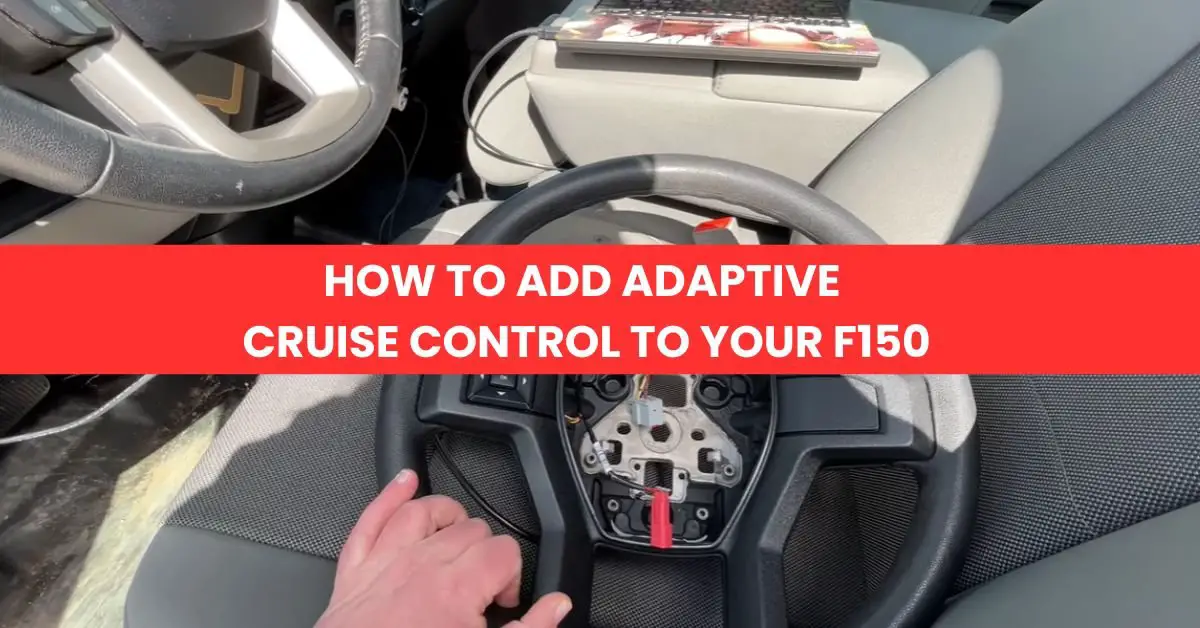Installing ACC on a Ford F-150 is entirely feasible, but the complexity depends on your truck’s model year, trim level, and existing wiring. This guide provides step-by-step instructions, a compatibility checklist, and a cost breakdown so you can upgrade safely and effectively.
Overview
Adding Adaptive Cruise Control (ACC) enhances highway driving comfort and safety. Key factors affecting installation:
- Trim and option packages (e.g., Trailer Tow, BLIS).
- Pre-wiring: Whether your truck already has wiring and modules for ACC.
1. New Models (2021+)
1.1 OEM/Aftermarket Kit Components
- Steering wheel with ACC controls
- Cruise Control Module (CCM)
- Dedicated CAN bus wiring harness
- Radar sensor (if not pre-installed)
1.2 Hardware Installation Steps
- Remove the old steering wheel and airbag module.
- Install the new ACC steering wheel.
- Mount the CCM on the steering column.
- Route the CAN bus harness from the CCM to the ECU and fuse box.
- Verify connections and torque all fasteners.
1.3 Programming with FORSCAN
- Connect an OBD-II adapter (e.g., ELM327).
- Launch FORSCAN and select the Cruise Control module.
- Enable ACC in the configuration menu.
- Write changes and reboot the ECU.
- Scan for errors and road-test the ACC function.
1.4 Complexity Assessment
- Plug-and-play if pre-wired.
- Skill requirements: Basic wiring and FORSCAN programming.
2. Older Models/Base Trims
2.1 Additional Hardware Requirements
- Front grille radar unit (e.g., Continental SRR).
- Distance sensors and mounting brackets.
2.2 Module Replacement and Wiring
- Replace or install the Image Processing Module A (IPMA) or equivalent.
- Run additional wiring from the radar to the CAN bus.
- Add relays and fuses as needed.
2.3 Professional Installation Considerations
Professional installation is recommended for:
- Complex module integration.
- Sensor calibration and system validation.
3. Compatibility Checklist
- Decode your VIN to confirm model year and trim.
- Check for a 12-pin pre-wiring connector on the steering column.
- Verify presence of Trailer Tow or BLIS packages.
- Ensure your Body Control Module (BCM) supports ACC.
4. Radar Calibration Procedure
- Use a Hunter Hawkeye or Ford IDS system.
- Run the radar calibration routine.
- Position the truck on a level surface with no obstructions.
- Monitor distance and speed readouts to confirm accuracy.
5. Cost Breakdown
| Item | Estimated Cost (USD) |
|---|---|
| Basic OEM kit | 200–400 |
| Continental SRR radar | 400–600 |
| Installation labor (2–3 hrs) | 200–300 |
| FORSCAN programming | 100–150 |
| IPMA module | 150–300 |
6. DIY vs. Professional: Pros & Cons
DIY:
- Lower cost.
- Requires wiring and programming skills.
- Risk of wiring errors and safety issues.
Professional:
- Higher cost.
- Guaranteed installation standards and warranty.
- Expert calibration and validation.
Conclusion and Recommendations
For 2021+ F-150s with pre-wiring, upgrading to ACC can be a straightforward DIY project. Older or base models without pre-wiring warrant professional installation to ensure safety and proper function. Use the compatibility checklist, follow the calibration procedure, and review the cost breakdown to plan your upgrade effectively.
Related Posts:
